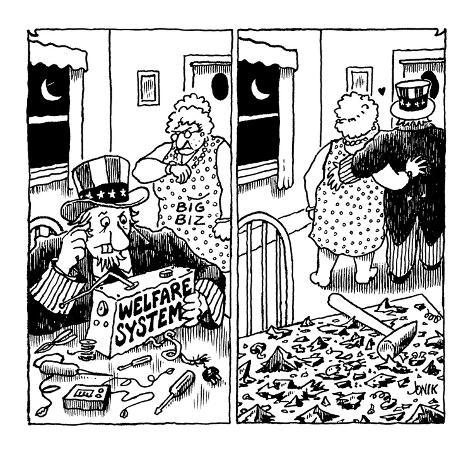As I've been working with a large immigration population during my internship at Nassau University Medical Center this semester, I have finally seen a firsthand account of the effects of the current battle within Congress over immigration reform. Immigration to the U.S, a country made and developed by immigrants, is a complex process defined by the Immigration and Naturalization Act (INA), which is the body of law currently governing immigration policy. But to better understand the American immigration policy let's look at some statistics from the Immigration Policy Center:
As politicians make this an issue of national security, they are lacking the foresight to understand the economic and social importance of our immigrant population. To most Americans, immigrants are viewed as an added pressure to our welfare system, burdening American citizens who are suffering from poverty. According to a Reason-Rupe poll, a staggering 45% of American's believe immigrants come to the U.S. to reap government benefits. However, political blogger Shikha Dalmia explains, immigrants are actually helping to protect our existing social-welfare system.
Dalmai's blog post entitled Don’t Believe What You’ve Heard About Immigrants and Welfare utilizes the following statistics:
- There is an annual worldwide limit of 675,000 permanent immigrants
- There are 480,000 family-based visas available each year (this allows U.S. citizens and lawful permanent residents to bring certain family members to the U.S.)
- There are more than 20 types of visas for temporary nonimmigrant workers, most temporary visas are for highly skilled workers or temporary workers who are sponsored by their employers
- Permanent employment immigration has a limit of 140,000 per year
- No group of permanent immigrants from a single country can exceed 7% of the total amount of people immigrating to the U.S. in a given year
- Refugees are admitted to the United States based upon an inability to return to their home countries because of a “well-founded fear of persecution” due to their race, membership in a social group, political opinion, religion, or national origin. The same goes for those seeking asylum in the U.S. and fear returning home
- In order to qualify for U.S. citizenship, one must be a legal permanent resident (green card holders) for at least 5 years, have a basic knowledge of the english language, U.S. government and U.S. history
As politicians make this an issue of national security, they are lacking the foresight to understand the economic and social importance of our immigrant population. To most Americans, immigrants are viewed as an added pressure to our welfare system, burdening American citizens who are suffering from poverty. According to a Reason-Rupe poll, a staggering 45% of American's believe immigrants come to the U.S. to reap government benefits. However, political blogger Shikha Dalmia explains, immigrants are actually helping to protect our existing social-welfare system.
Dalmai's blog post entitled Don’t Believe What You’ve Heard About Immigrants and Welfare utilizes the following statistics:
- A 2006 analysis by the Texas comptroller estimated that low-skilled unauthorized workers cost the state treasury $504 million more than they paid in taxes in 2005. Without them, however, the state’s economy would have shrunk by 2.1 percent, or $17.7 billion, as the competitive edge of Texas businesses diminished.
- A 2006 study by the Kenan Institute at the University of North Carolina found that although Hispanic immigrants imposed a net $61 million cost on the state budget, they contributed $9 billion to the gross state product.
Low-skilled foreigners receive the least amount of welfare aid (such as Food Stamps and public assistance) while providing low-wage employment that is vulnerable to abusive powers. By restricting these immigrants from a fair path to citizenship and rights within the U.S. we are stripping both the American economy and society from any means of progress.


